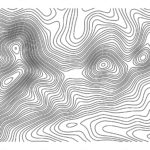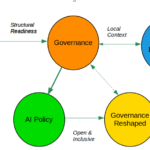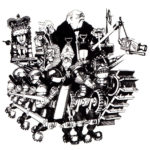Written back in 1984, the content of Albert Borgmann’s book loudly resonates today.
Borgmann argues that contemporary life is shaped by technology that stamps its imprint all over the place, and can even define its whole character. However, such a pattern is not usually evident nor always utterly dominant as technology has to compete with other factors while simultaneously threatening to obliterate some aspects of our lives.
The book is an attempt to study these phenomena which demand a robust analytical framework. The first and shorter part of the books attempts to develop this. Part 2 considers the character of technology or what the author calls the pattern of technology and its central traits in modern society. And section 3 of the book deals with the issue of reforming technology to ensure it brings real liberty and prosperity.
For Part 1, theory and technology need to come together and must be linked to theories of technology, the nature of the scientific method and the relation between science and technology. Borgmann argues that the pattern of modern technology is most evident in the existence of a multiplicity of technological devices, what he calls the “device paradigm” (pg.3 ). Devices replace things and practices and can be characterized by their dual nature as both commodities and machinery. We thus need to fully understand the device paradigm. But this can only be properly achieved if we also consider the “focal things and practices” that are endangered by this paradigm.
The development of a theory of technology demands a review of existing theories to ensure we can avoid existing pitfalls. Borgmann classifies current approaches of technology into three categories: 1. The substantive theory; 2. The instrumentalist perspective; and 3. The so-called pluralist view of technology.
The substantive approach also called the sociological approach or technology value determinism, sees technology as an independent force that cannot be stopped by any means. It also gives technology a negative connotation, similar to what we know today as dystopian perspectives, where humans just cannot control technology anymore. Jacques Ellul is a good representative of this approach (I would add Heidegger to this team!).
The instrumental perspective, also called the anthropological approach, argues that humans beings are both toolmakers and tool users, from simple tools to sophisticated machines and devices. Being just a tool, we then need to inquire what guides the development of technology. As a tool, technology is also neutral which fits perfectly well with the liberal democratic tradition where technology can have a place in public policy making with state support. Some critics of instrumentalism accept the approach but claim that any study of technology must also be a social critique. In Borgmann’s view, instrumentalism is not a proper theory of technology as any piece of technology can be seen as neutral thus ignoring the issue of goals and ends.
Finally, the pluralist views try to incorporate all approached, takes into account all these factors and establishes unresolved issues and counterexamples. While pluralism does well against the other theories, it is not supported by empirical evidence.
We thus need an alternative approach to build a robust theory of technology. Here, Borgmann introduces the idea of classification and uses the scheme that Car Mitcham developed back then. Mitcham proposed three dimensions for the understanding of technology: 1. The subject or material; 2. The functional or structural; and 3. The social or historical. The first one is very close to the technical or engineering focus on technology and thus not helpful for a philosophical approach. The last one should be the realm of socials scientists and historians. That leaves the second as the most relevant and Borgmann builds on this to have a concept of the “essence of technology” (pg 14., this is Heidegger again but no reference to him in the text!).
Mitcham argues that the structure of technology has, in turn, three elements: 1. Technology as knowledge; 2. Technology as a process; and 3. Technology as a product. And these three aspects should be considered together to have a proper theory of technology. The first one, in particular, is vital and the one that at the same time the most neglected. Technology as knowledge needs to connect to the relation between modern science and technology which are probably not one and the same thing.
Modern science can be characterized by seeing the world within a matrix of scientific laws which offers the possibility of bringing forward great transformations. “Modern technology reflects the determination to act transformatively on these possibilities” (pg. 24).
On this basis, Borgmann proceeds to develop parts 2 and 3 of the book. In the end, it is not clear if Borgmann falls back into the substantive approach as he seems to argue that the pattern of technology is not heading the way it should go. But unlike the substantive view, the author sees room for human agency to change such a pattern. And this is a crucial point as technology after all is a social product.
Borgmann, Albert. 1984. Technology and the Character of Contemporary Life: A Philosophical Inquiry. Chicago: University of Chicago Press. ISBN: 0-226-06628-2
Cheers, Raúl





